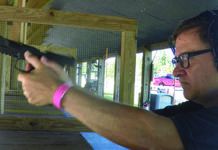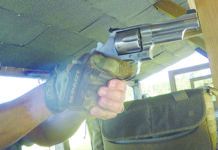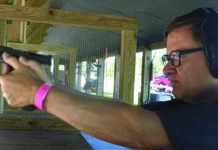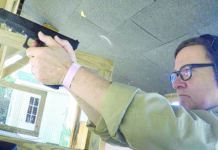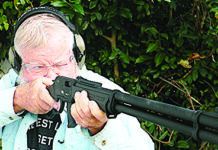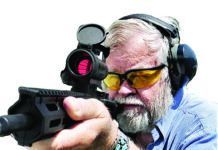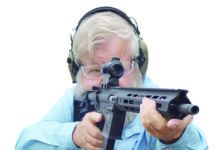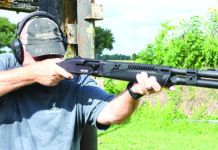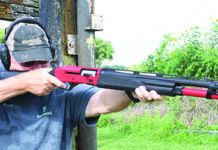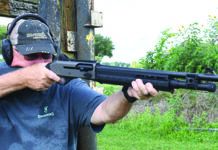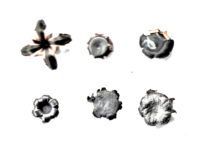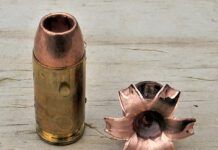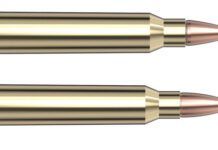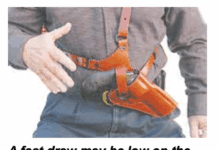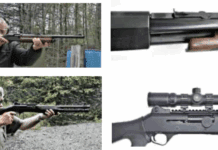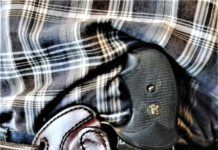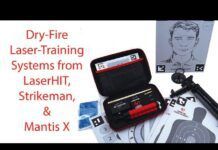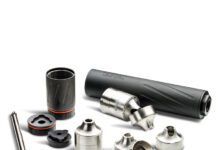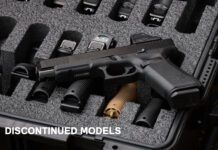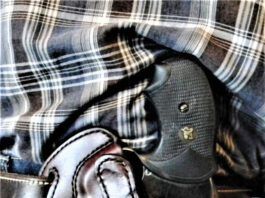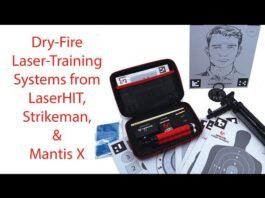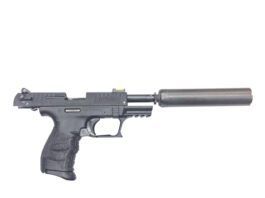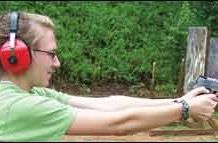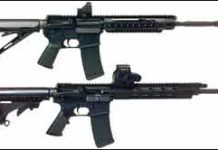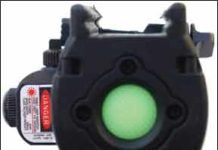Handgun Grips for Self-Loading Pistols: We Compare 17 Brands
Two E-Rifles Go Head to Head: Ruger Essential vs. Adcor Elite
AR-15 rifles continue to be churned out by more and more manufacturers. Frankly, the modular concept of the AR platform means that rifles can be built to specific price points, more easily, we think, than traditional bolt guns or other actions. And we recently found two such guns that illustrate how perfectly pitched the product price can be made to appeal to a specific customer.
The Ruger SR-556E "Essential" #5912 5.56mm NATO/223 Rem., $1375, is what Sturm, Ruger calls its value-priced two-stage piston-driven carbine. The major similarity between it and the SR-556FB (January 2010) is the carryover of Ruger's two-stage piston and multi-stage regulator. The major difference is, rather than a quad rail, the Essential has a round aluminum handguard with a full-length Picatinny rail only at 12 o'clock, so the rail and the flattop receiver align. The handguard is also drilled and tapped to accept sections of rail or handguard covers, available at www.ShopRuger.com, which allows the user to configure the handguard to his or her requirements while minimizing size and weight. It's also a significant cost savings over the quad rail.
Adcor Defense's B.E.A.R. Elite is the second generation of that company's modern automatic rifle line. Based in Baltimore, Adcor rolled out the original B.E.A.R. (Brown Enhanced Automatic Rifle, designed by and named for Michael J. Brown, executive vice president of operations at Adcor Defense) with a free-floating gas-piston system attached to the rail. This allowed for a free-floating barrel. Other features were a key-locked rail system, an ambidextrous forward-placed charging handle, and a polymer dust shield that protects the ejection port from debris.
The B.E.A.R. Elite tested here offers several enhancements to the original (hereafter, we'll spell it "Bear" so those capital letters don't scream on the page). The Bear Elite features an FN Manufacturing 1:7 twist hammer-forged, hard chrome-lined barrel with M249 rifling profile, a Magpul MOE Mil-Spec rifle stock, and a Magpul MOE rifle grip. Both the Bear and Bear Elite are available in several barrel lengths, optics ready or with sights, and in fully automatic for law enforcement. Our test gun here is the optics-ready (no sights) 16-inch-barrel Adcor Defense Brown Enhanced Automatic Rifle (B.E.A.R.) #201-2040 E, $2214.
The charge we gave our test team was to compare a highly-rated gas-piston gun to the two new entries, so we chose the Ruger SR-556FB 5.56x45mm NATO-223 Rem., $1995. It's obviously very similar to the 556E — but much more expensive. In contrast, the Bear Elite offers an interesting set of potential upgrades, but it is $200+ more expensive than the SR-556FB.
Many Factors Explain ‘Black Friday’Gun-Buying Surge, Says CCRKBA
Burris Launches New Tactical Riflescope Line
New CT Lightguard Tactical Lights
GunReports.com Video: 3-Gun Matches
Uncluttering Your AR-15 Rail: Pick Combo Laser/Light Grips
The AR-15's popularity is partially due to the weapon's modularity, light weight, and fast handling. But too much technology hung off every rail can morph the AR into an unwieldy and overly complicated rig—turning "tactical" into "tacticool."
Multifunction devices that combine optical laser and lighting into a vertical grip platform can help keep your rifle trim and uncluttered. We recently tested four such laser/light foregrips from three manufacturers. From MidwayUSA we bought two models made by Crimson Trace Corporation, the MVF-515 Red ($399, # 211142) and the MVF-515 Green ($599, # 812310). Both grips use a dual output 150-/200-lumen LED and feature independent controls for the light and laser. The now-discontinued but inexpensive Lasermax Colt AR-15 CGL Foregrip Laser ($161 at www.CheaperThanDirt.com, #61493) combines a red laser with a low-output LED for navigation lighting. At Sig's online store www.SigSauer.com, we found the Sig Sauer Stoplite STL-300J, $215, which combines a monstrous 700-lumen tactical light with a red laser.


